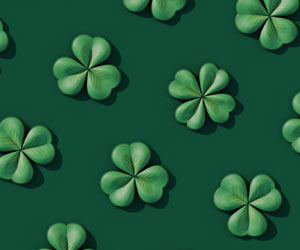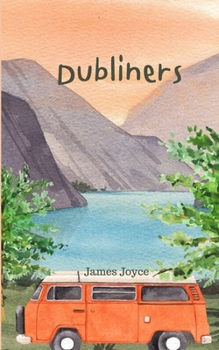Dubliners (Annoted)
Select Format
Select Condition 
Book Overview
Dubliners is a collection of short stories by James Joyce, first published in 1914. It's a snapshot of Dublin society in the early 20th century, capturing the lives of ordinary people in various stages of their existence. The stories are interconnected thematically, offering a vivid portrayal of the city and its inhabitants. The collection consists of 15 stories, each exploring different facets of human experience, often with a focus on the mundane...
Format:Paperback
Language:English
ISBN:2487116307
ISBN13:9782487116306
Release Date:November 2023
Publisher:Jason Nollan
Length:284 Pages
Weight:0.68 lbs.
Dimensions:0.6" x 5.0" x 8.0"
Customer Reviews
7 ratings
Misleading listing
Published by Rafael , 4 months ago
Book was listed as very good but had water damage and was very dirty
Fair not very good
Published by Disappointed , 11 months ago
Bought a book that was in “very good” condition but it seems to be in fair condition at best with loose pages, lots of writing, and folds on cover
One of the greatest of all story collections
Published by Thriftbooks.com User , 19 years ago
This is one of the greatest of story collections. It does in miniature what 'Ulysses ' will later do in a far more detailed and complete way i.e. give a picture of the life of the people of Dublin as a picture of the life of mankind in general. Its stories are structured thematically and connect with each other in multiple cross- reference. The surface details of each story, beginning with the names of the stories have rich symbolic meaning . There is in the stories an intense lyricism and music which climax in the title story. The great Joycean themes of stifling family, church, country are presented here without emphasis on what will be the central Joyce theme in 'Portrait of the Artist as a Young Man' and 'Ulysses ' - the liberating power of Art. But the liberating power is there within the stories themselves which are deep renderings of the world Joyce has reforged in the smithy of his soul as his own.
The Lessons of Life in Dublin
Published by Thriftbooks.com User , 19 years ago
The simplest of all of Joyce's works, Dubliners introduces the people and everyday life present in Dublin, Ireland. While the events can be described as quite mundane, each of the fifteen short stories subtly highlights a unique meaning in life. Though each is self-sustaining, it is much more gratifying to read the tales in the order published. They follow the natural course of human life, growing from childhood to adulthood to death. Joyce skillfully demonstrates a sequence of events that can happen to anyone throughout a lifetime. However, if you are completely unhappy with the first stories, skip to the end and read "The Dead". There is no doubt in my mind that this is one of the best stories of fiction of its time - both in its use of language and its powerful messages. Actually a novella, this final story encompasses everything from politics to love to the inevitability of death rendering all else meaningless. While many people finish the Joyce's collection finding it to be one of the more depressing pieces of literature they have read, it really is not. For example, "The Dead" proves that death is essential to making a fresh start. Joyce did not intend to write to please others and leave them satisfied, but instead to portray reality in a grim city. Just remember, after finishing Dubliners, you are one step closer to reading Ulysses!!
A 20th Century Masterpiece
Published by Thriftbooks.com User , 20 years ago
James Joyce's "Dubliners" is a shining example of the beautifully expressive power of the English language. The book offers a compilation of short stories, each as intriguing and captivating as those that precede and follow.To truly enjoy the remarkable magnificence of this book, it is important to first recognize the three key aspects of each story: symbolism, imagery, and character development. The first of which to be examined is the most vital, as each story of the book is enveloped and completely built upon Joyce's deep and profound symbolism, with each character also defined by the same.We can first look upon the title character of "Eveline," for whom the lattice-work of a window represents the bars of her prison-cell, and the fading streetlights beyond depict the hope of her life dissipating in the darkness of ever-encroaching night.Easy to recognize, the symbolism of "Dubliners" is amazingly proficient in its ability to provide a deeper insight and understanding that truly does raise this book above the stature of its otherwise common stories. Joyce's masterful use of this literary technique is then placed within simple linguistic structures that are easily identified, yet powerful and splendidly thought provoking in its very core and concept, as well as by the nature in which it is employed. The careful explication of, and adequate attention give to this symbolism is very relevant, as it is essential in achieving a greater appreciation of each story being told, the characters portrayed within, and of Joyce to entertain with each.Wild and vivid imagery frames the story through the author's immense, yet extremely enjoyable descriptive nature. A majority of each story's progression takes place between the dialogue, which is sparse to say the least, giving ample opportunity for Joyce's spectacular, though usually dark and gloomy imagery. It is also within this narrative that the characters spring to life. Being depicted as ordinary people suffering internal conflicts, they are tightly bound to the reader through relative and universal experiences. Eloquent and poignant examples of this can be found in the title characters of both "Eveline," and "Araby."The central characters of "Dubliners," at first glance, appear quite flat, as seen in their dialogue. But upon closer inspection, the depth of Joyce's imaginative narrative bring them round, and fully-developed. Each of these characters, in their own respective way, is brilliantly constructed through elaborate thoughts and feelings, which, ironically, display the faults, failures, and weaknesses that they bring into their personal struggles. This appears to be Joyce's unique and quite genius way of building to climax, in which the audience is forced to believe in the strength and courage of characters of which we already know them to be deficient. It is, therefore, a cleverly devised surprise when they remain weak-willed, and are lead into despair, even though this path has been c
One of the greatest and most influential collections
Published by Thriftbooks.com User , 22 years ago
Though now more famous for his later, immense, incredibly ambitious novels, James Joyce's early collection of short stories remains a classic - and for good reason. Joyce, as someone once pointed out, was and remains almost unique among writers in that he published only masterpieces. Granted, he took years (eventually decades) to write each book - yes, even this slim volume of 15 short stories. It paid off. Just as Joyce was immensely influential with his stream-of-consciousness (or interior monologue) style used in Portrait of The Artist As A Young Man and Ulysses (#3 and #1 on Modern Libary's Top 100 Books of the 20th century, respectively), and the... let us say, indescribable, style of Finnegan's Wake (which people are STILL trying to figure out), his style in writing these short stories became almost the archetype for short fiction in this century. Instead of focusing on action-oriented events in the story (or, as Edgar Allen Poe suggested, by trying to create a particular mood), Joyce instead centered on the simple, everyday mundane events of regular life. This not only made the stories seem realistic and believable, but also made them universally applicable. This is the reason why this is considered one of the greatest short story collections of all-time, and has been one of the most widely anthologized. A true classic of the 20th century.
Perfection!
Published by Thriftbooks.com User , 25 years ago
My first encounter with Joyce was an English Lit. course in college, some twenty years ago now. We were assigned to read an anthologized version of "The Dead", and I initially approached it as one does all such reading requirements at that foolish age; however, this particular story ending up affecting me quite unlike anything I had ever read before. Dubliners is a beautifully written collection of thematically inter-related stories involving day to day life in early 20th century Dublin - stories that masterfully evoke what Faulkner described in his Nobel address as being the essential nature of true art: A portrayal of the human heart in conflict with itself. "The Dead" is the final story in the collection, and my favorite. I have re-read it numerous times and am so consumed by it that I'm not even able to provide an objective review. The final pages, from the point where Gabriel and Greta leave the party, to the end of the story, are absolutly stunning; the poetry of the words, the profound humanity represented - defies description. As in the final line of Rilke's "Archaic Torso of Apollo" - You must change your life.
Dubliners Mentions in Our Blog

Discover Irish Authors You Must Know
Published by ThriftBooks Team • March 10, 2022
Ireland is no stranger to being home to literary legends, which may partly explain why it's referred to as "The Land of Saints and Scholars." With St. Patrick's Day quickly approaching, what better time to honor these literary legends and highlight some of the best Irish authors?






